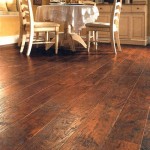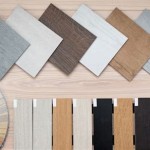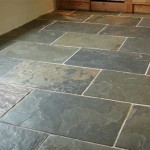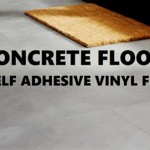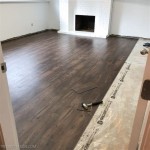Understanding Engineered Wood Flooring Vs Hardwood Floors
Choosing the right flooring for your home involves considering various factors such as durability, aesthetics, and budget. Two popular choices are engineered wood flooring and hardwood floors, each offering unique advantages and disadvantages. This article aims to provide a comprehensive comparison between the two, helping you make an informed decision for your specific needs.
Construction and Composition
Engineered wood flooring consists of multiple layers, with a top layer of real wood veneer attached to a plywood or HDF (high-density fiberboard) core. This construction allows for greater stability and dimensional stability, making it less prone to warping and shrinking than solid hardwood. Hardwood flooring, on the other hand, is made from a single piece of solid wood, typically sourced from trees like oak, maple, or cherry.
Installation and Maintenance
Engineered wood flooring, due to its construction, is generally easier to install than solid hardwood. It can be installed over concrete subfloors, which is often challenging with solid hardwood. Moreover, engineered wood can be installed using various methods, including floating, glue-down, and nailing. This flexibility makes it suitable for various applications. Hardwood flooring, while offering a classic and timeless aesthetic, requires skilled installation and may not be suitable for all subfloors. Solid hardwood flooring typically requires specialized installation techniques and can be more labor-intensive, leading to higher installation costs.
In terms of maintenance, both engineered wood and hardwood floors need routine cleaning and care. Sweeping or vacuuming regularly is essential to remove dirt and debris. However, engineered wood flooring offers greater resistance to scratches and dents, making it a more practical choice for high-traffic areas or homes with pets. Hardwood floors, while beautiful, require more attention to protect their finish. They may need refinishing every few years, depending on wear and tear, to restore their shine and protection.
Cost and Value
Engineered wood flooring typically costs less than solid hardwood flooring. This price difference is attributed to the use of less expensive materials and the greater efficiency of the installation process. However, it's important to note that the cost of engineered wood flooring can vary depending on the type of wood veneer used, the thickness of the wear layer, and the quality of the core material. Solid hardwood flooring, while more expensive upfront, often holds a higher resale value. This is due to the perception of solid wood flooring as a premium and durable material.
Sustainability and Environmental Impact
Both engineered wood and hardwood flooring can be sourced from sustainable forests. However, the environmental impact of each type can vary significantly. Engineered wood flooring may use less wood overall, as it incorporates plywood or HDF core. This can reduce the pressure on forests and potentially reduce the carbon footprint of production. However, the manufacturing process of engineered wood may require more energy and resources, especially for the core materials. Solid hardwood flooring, while using more wood per unit of flooring, typically uses higher-quality wood with a longer lifespan. Additionally, solid hardwood flooring can be refinished multiple times, extending its lifespan and reducing the need for replacement. Ultimately, choosing the most sustainable option depends on the specific sourcing practices of the manufacturer and the lifecycle of the product.
Aesthetic Considerations
Engineered wood flooring offers a wide array of wood species, colors, and finishes, allowing for a variety of design options to complement any interior style. It is also available in various plank widths and lengths, creating diverse visual patterns. The wear layer, which is the visible top layer of real wood veneer, can be thinner than solid hardwood. This allows for the use of rare or exotic wood species, which may not be readily available in solid hardwood format. Hardwood flooring provides a timeless elegance and warmth that is hard to replicate. The natural grain patterns and unique characteristics of solid wood add a distinct character to any space. However, solid hardwood may have limitations in terms of color and finish options, as the options are often limited by the specific wood species used.

Engineered Wood Vs Solid Which Is Better Flooring

Hardwood Vs Engineered Wood Flooring Which Is Better Bessemeter

Engineered Wood Flooring Vs Solid Hardwood

Engineered Vs Solid Wood Flooring Main Differences Esb

Engineered Wood Flooring Vs Solid Forté

Solid Vs Engineered Hardwood Floors What S The Difference

Solid Vs Engineered Hardwood Which Is Better

Blog Engineered Vs Hardwood San Marcos Tx Quality Floors More

The Differences Between Solid And Engineered Hardwood Flooring Garrison Collection

Navigating The Maze Understanding Differences Between Solid And Engineered Wood Floors In Britain
See Also


